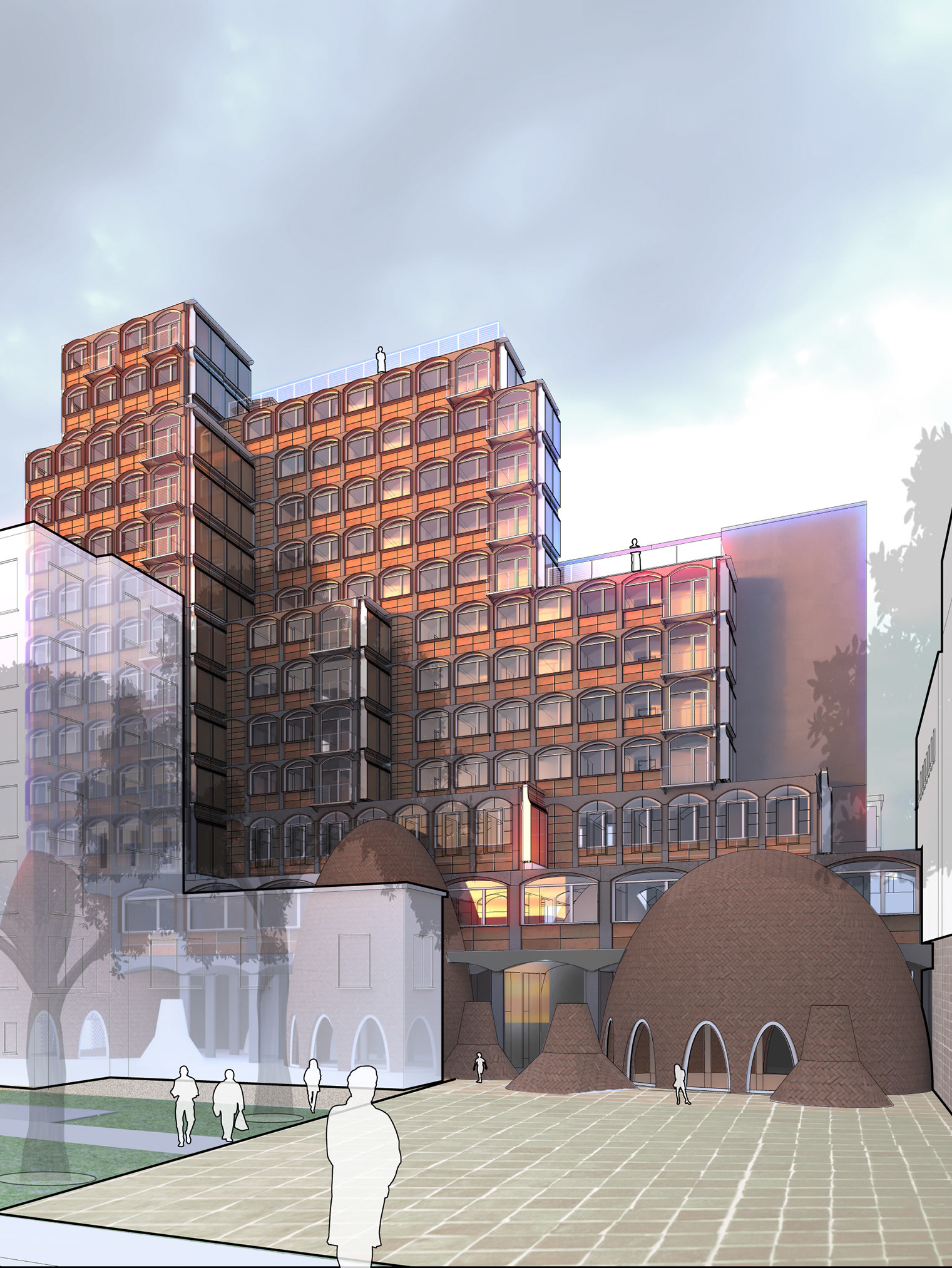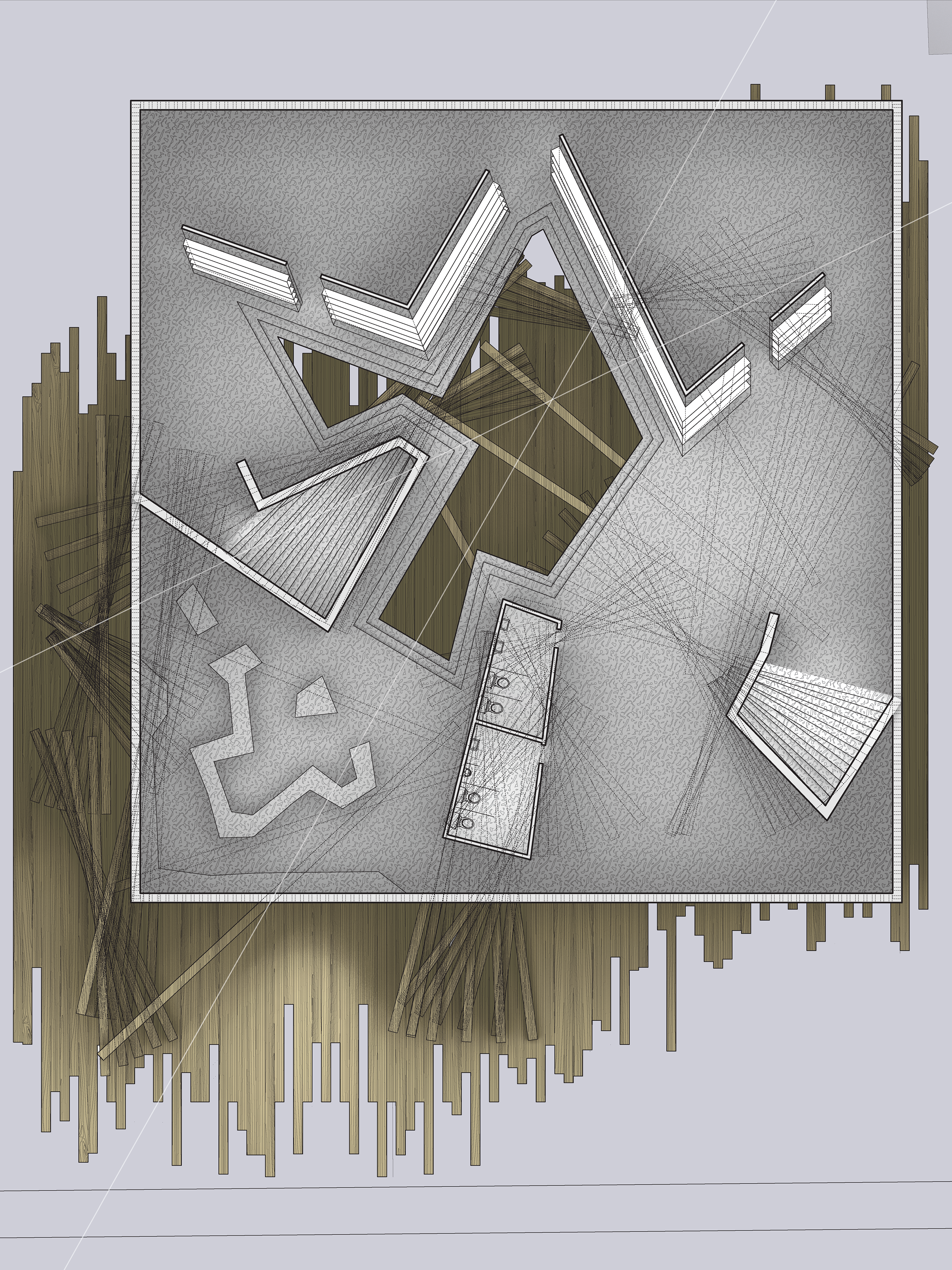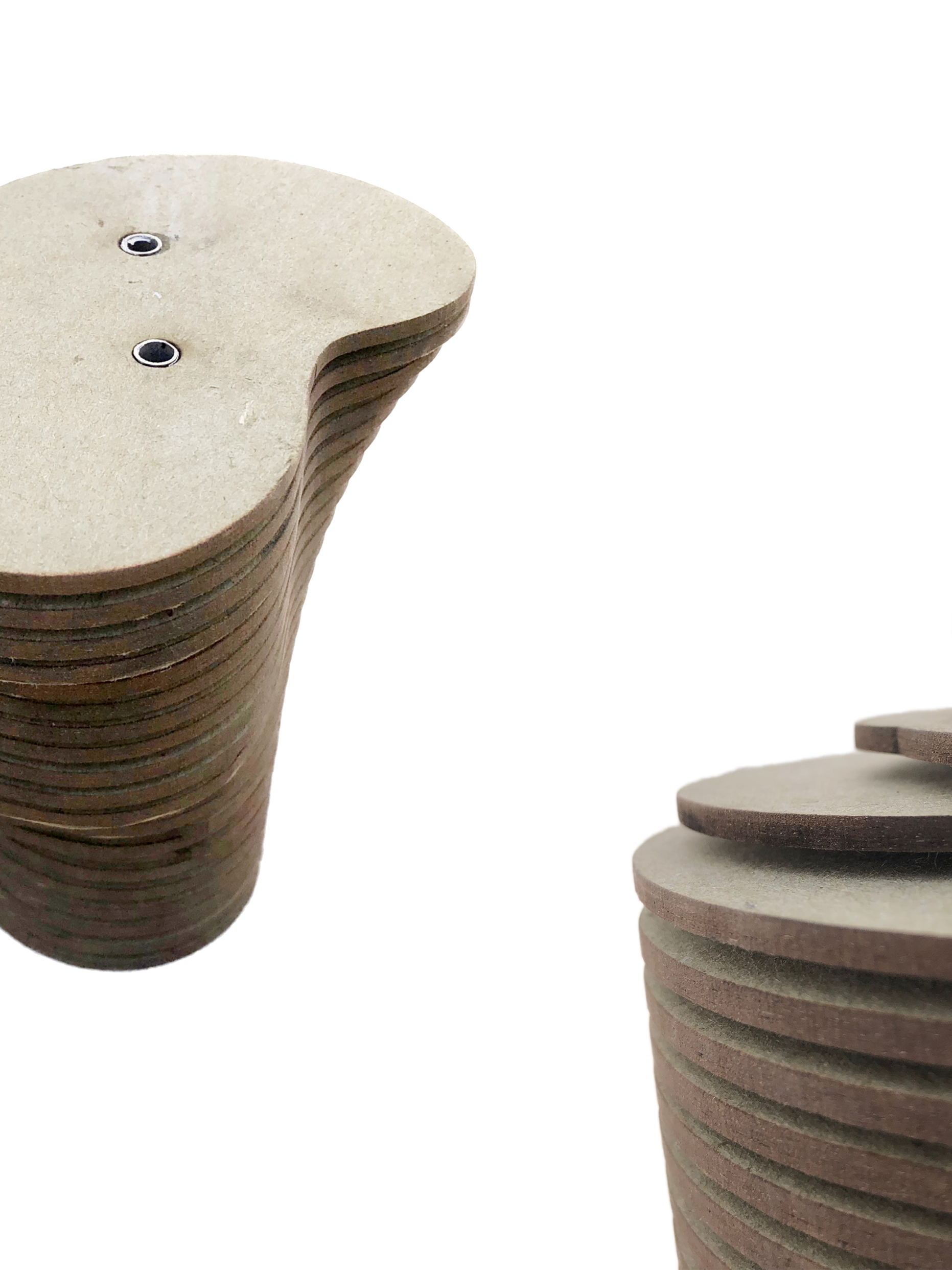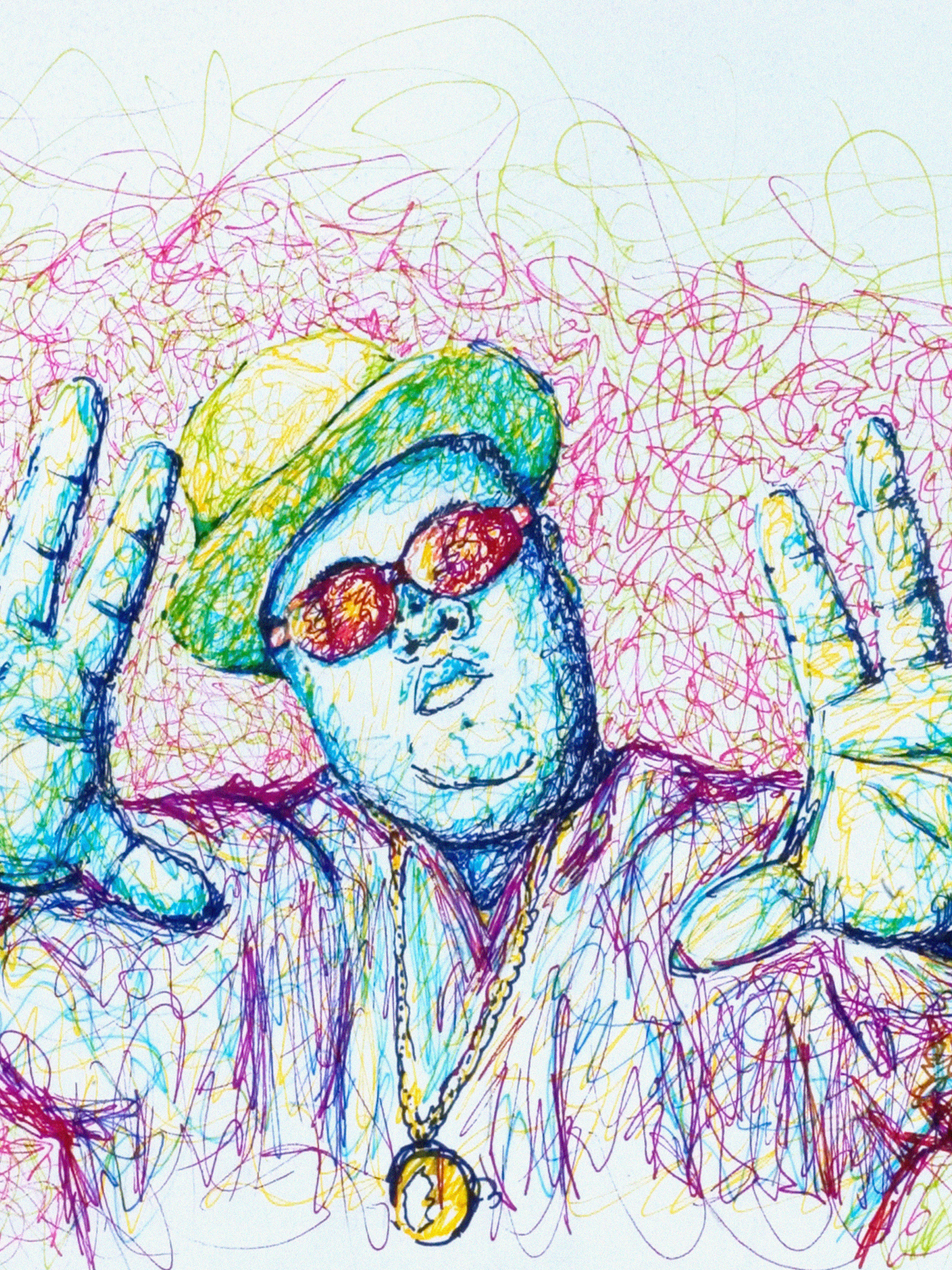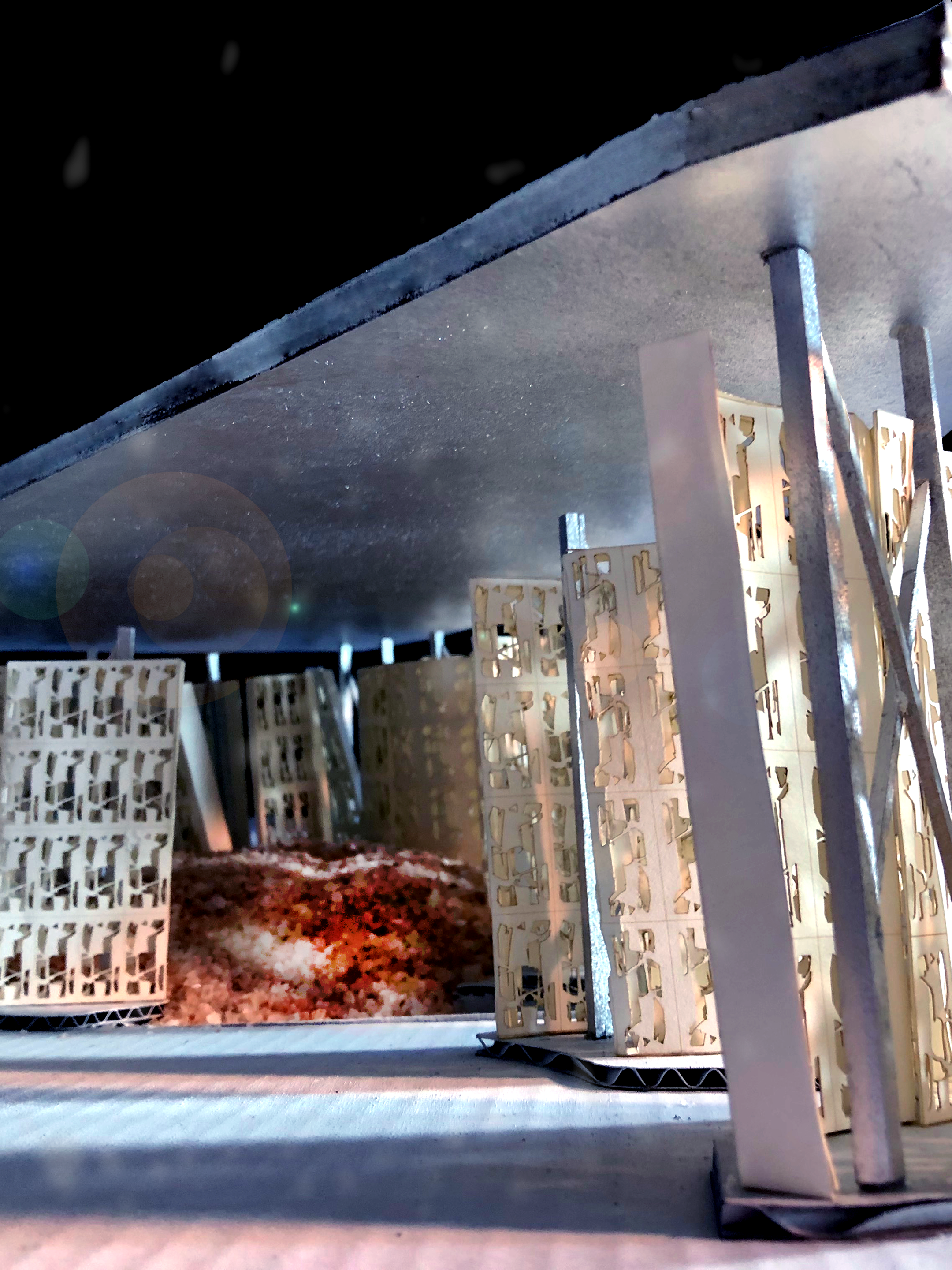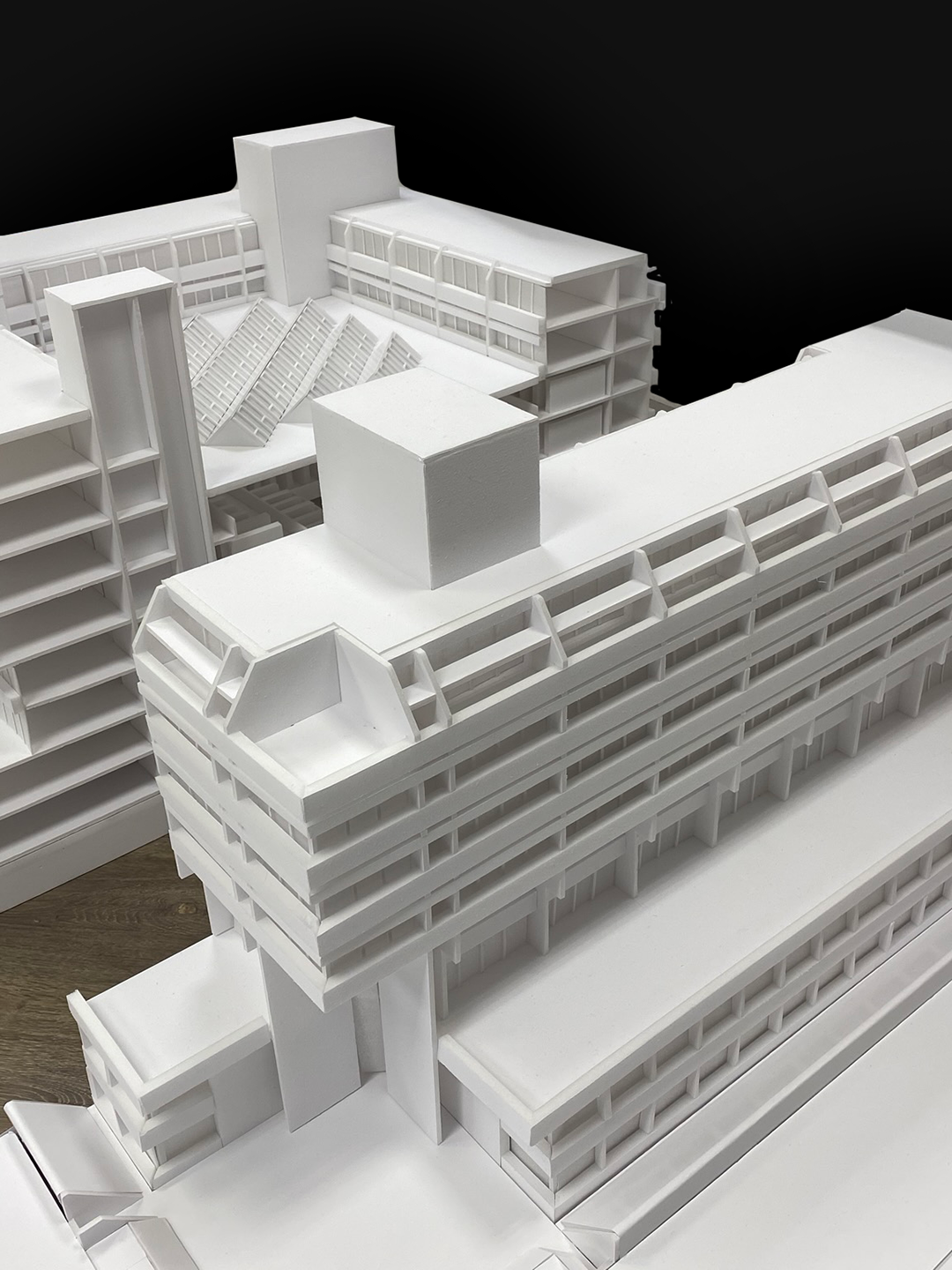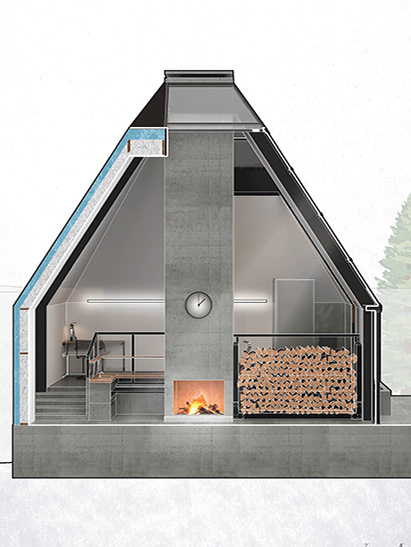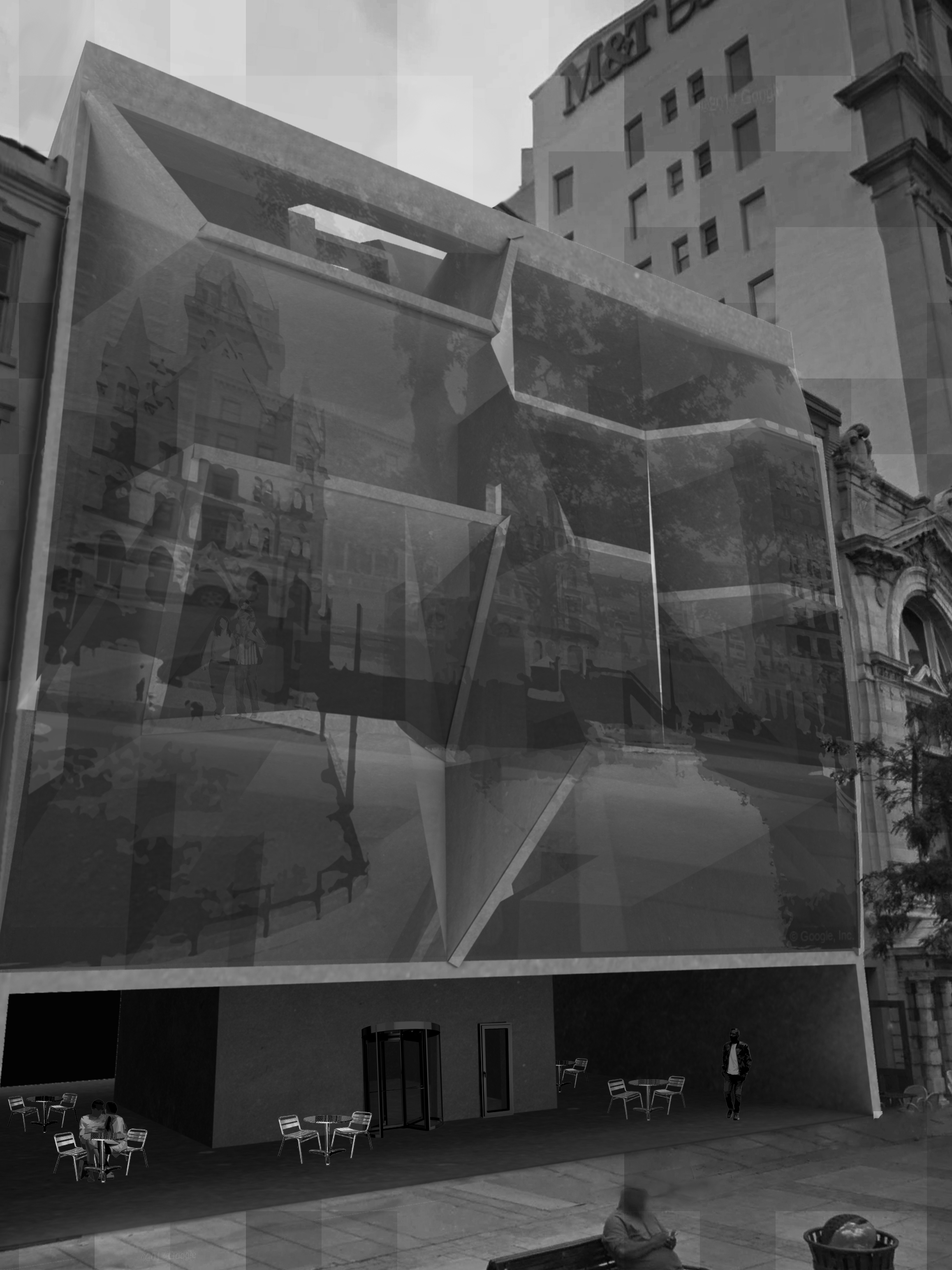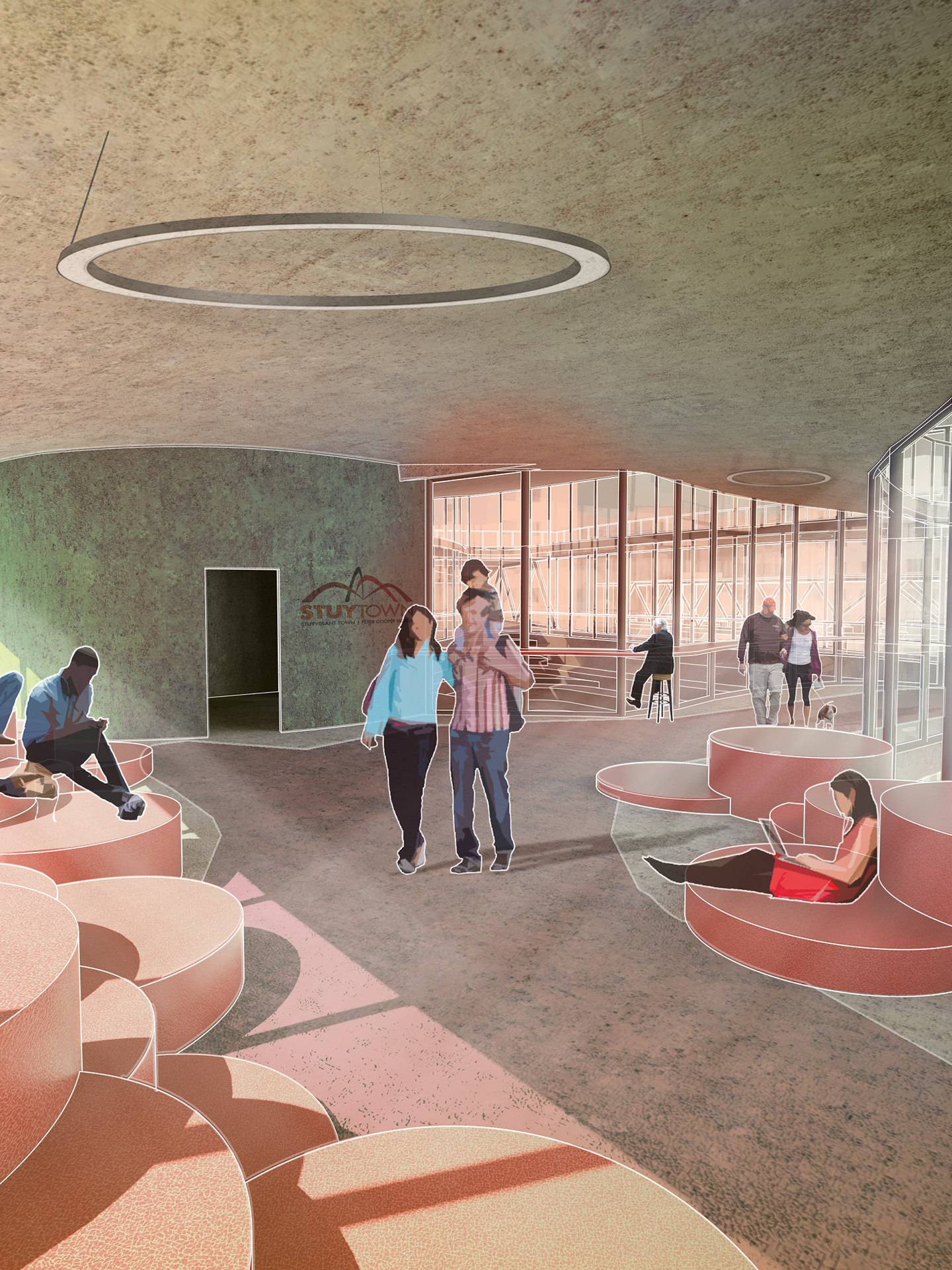2018
Syracuse, NY
Designed under Professor Valeria Herrera
In his monumental excavations, site-specific constructions, geometric paintings, and drawings, Michael Heizer explores the relationship between positive and negative space, considering the profound effects of form and scale, and evoking the simultaneous feelings of awe and dread that constitute the sublime.
In the winter of 1967, Heizer made a trip to the Sierra Nevada mountains, where he dug two large pits in the woods, lining one with plywood and the other with sheet metal. He declared this work to be “ultra-modern art,” and it was a turning point in his practice.
Heizer has since continued his exploration of the dynamics between positive forms and negative space. Completed in 1967, North, East, South, West, consisted of several geometrically-shaped holes dug in the Sierra Nevada. The following year, Heizer completed “Nine Nevada Depressions”, a series of large negative sculptures located primarily on dry lakes throughout the state, Jean Dry Lake, Black Rock Desert and Massacre Dry Lake, near Vya, Nevada among them. The culmination of this critical early period was the creation of Double Negative in 1969 and 1970, a project for which he displaced 240,000 tons of rock in the Nevada desert, cutting two enormous trenches—each one 50-feet-deep and 30-feet-wide, together spanning 1,500 feet—at the eastern edge of Mormon Mesa near Overton, Nevada.
Heizer’s work, drastically challenging scalar, material, and exhibitionary artistic conventions, suggests that the space one takes away is just as important as the form one constructs.
The Double Negative Sculpture Annex reappropriates a selection of Michael Heizer’s seminal works in a spatial context, creating a two-fold narrative for landscape interaction. The POSITIVE procession views works from their traditional perspective, via sculpture’s direct interaction with natural landscape. Heizer’s work, comprised of jagged edges of adjoining corten steel plates, starkly contrasts the organic curves and vibrant greens of the surrounding Long Dock Park.
The NEGATIVE procession internalizes the subterranean space created by Heizer’s work, neglecting the surrounding landscape while fully enveloping visitors in a world devoid of natural form or materiality. The negative procession underscores Heizer’s excavation of landscape, underscoring the monumental nature of his work.
The EarthWorks Gallery and education center displays Heizer’s work on paper, where his creative process is revealed through analytical drawings. Columns lodged with suspended rock samples hearken to excavation of landscape, further exploring the excavatory principles of Heizer’s work and its material ramifications.
SCULPTURES ON DISPLAY
DOUBLE NEGATIVE SCULPTURE ANNEX
